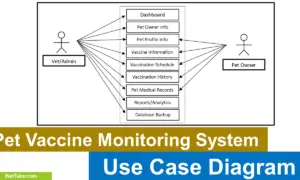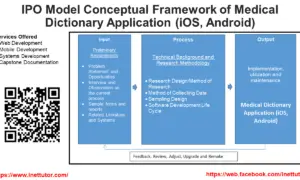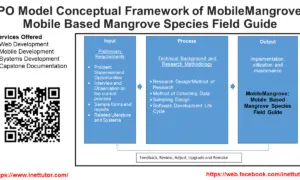Document Control System Conceptual Framework
This post will walk you through the process of developing a conceptual framework for a capstone project titled Barcode Based Document Control and Management System. The input, process, output (IPO) model was used to develop the conceptual framework for the investigation.
About the Project
Table of Contents
The current process of archiving the documents is done manually using the folder and cabinet method which seems to be stressful if you have a lot of documents to be arranged and archived, aside from that searching and locating of documents is also a major concern. With the specified issue about the manual process, it is strongly recommended to design and develop an information system that is efficient in the archiving process of documents. Barcode-based document control and management systems offer several advantages over traditional paper-based systems. First, barcodes can be used to track the location of documents, so that they can be easily retrieved when needed. Second, barcodes can be used to track the status of documents, so that users can be notified when a document is updated or changed. Third, barcodes can be used to automate the process of filing and retrieving documents, so that users can save time and effort.
Objectives of the Study
- To develop a system that uses barcode in managing information that provides accuracy in collecting information.
- To provide a system that will help different firms that is dealing with heavy loads of documents.
- To develop a system that is fast, accurate and efficient.
- To develop a system that is accessible by the user.
- To develop a system that will reduce hassle in managing different documents.
Conceptual Framework/Model
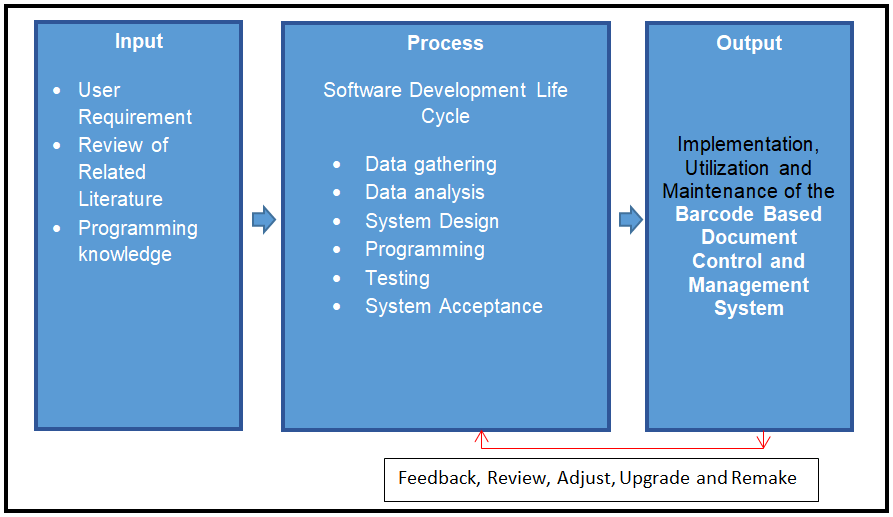
The figure above depicts the project’s conceptual structure, entitled Barcode Based Document Control and Management System. The input, process, and output (IPO) model is used.
Input
User Requirement – This is the area where the researcher’s obtained information about the system’s unique properties. It is vital to consider their opinions because they will be using the Barcode Based Document Control and Management System.
Review of Related Literature – The researchers have conducted investigations and studies in the proposed system’s region. This procedure will be useful to the researchers as they develop the project or system.
Programming Knowledge – This is where the researchers can now use their knowledge in programming to design and develop the system.
Process
This is the part where the researchers will select and choose the best software development life cycle model for the project.
Data gathering
During this phase, the study’s researcher gathered all conceivable needs for the system’s development, including those obtained from the system’s beneficiaries, the end users. The survey questionnaire was created by the researcher and was validated by specialists. The surveys were used to collect information in order to improve the performance of the proposed system for future community use.
Data analysis
Consultation is used to gather requirements from the end user and generate ideas. We also administered a survey questionnaire, which was accepted by the three experts (IT Expert, English Grammarian, and Researcher). These questionnaires also functioned as our data collection tool for evaluating the performance of the manual system, which served as the foundation for creating our suggested system.
System Design
During this phase, the prototype and planned system features are developed. A concrete grasp of how the system will work is also formed. In this section, we identify all of the necessary system inputs and outputs, as well as the design of data, processes, and interfaces.
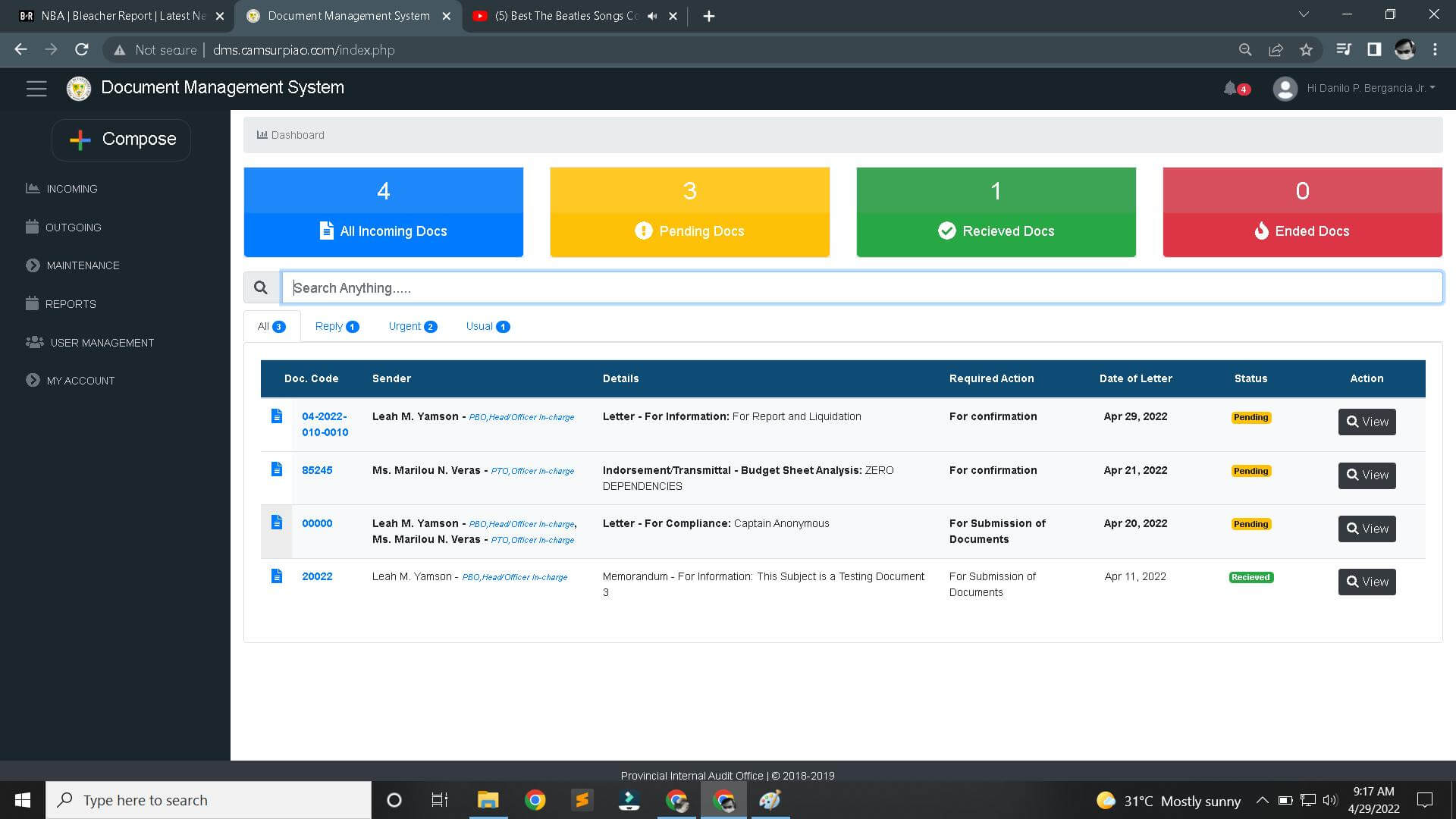
Programming
In this stage, we materialized the whole idea of the software to be designed. We created the program for the proposed system. The actual coding of the software is based on the system design and the requirements needs to be met. This is where the proper execution of the previous stages ensures a smooth implementation.
Program testing
In this phase, the researcher performed series of testing to check for any possible problems may arise during implementation and operation of the software and if the specification has been met.
The development and testing of a Barcode Based Document Control and Management System (BDCMS) is a process that requires careful planning and execution. The system’s ability to control and manage documents via barcodes is a critical function that must be tested thoroughly before the system can be deployed.
There are a number of factors to consider when planning the testing phase of a BDCMS. First, the system must be able to accurately read and decode barcodes from various types of documents. Second, the system must be able to populate and manage document records based on specific barcode patterns. Third, the system’s user interface must be easy to navigate and understand. Finally, the system must be able to handle a large number of document records and transactions.
System acceptance
This is the final stage, where the system is being installed and to be maintained after actual implementation. One must take into consideration are the hardware and the software requirements for the proper installation of the system. As part of the acceptance of this phase, the client is required to have a user training to enable them to familiarize fully the whole system.
Output
Barcodes are used in document control and management to store and retrieve information about documents. Barcodes can be used to track document location, identify document type, and track document revision history. Benefits of using barcodes include improved document control and management, reduced document processing time, and improved document security. Challenges of using barcodes include the need for accurate and reliable barcode scanning, the need for a barcode reader, and the potential for document theft. Overall, barcodes are a useful tool in document control and management systems.
After all of the relevant procedures have been completed, the project comes to life and is carried out in the actual world. A new project is born, and it will be maintained for the long-term existence of the project. At this point, the Barcode Based Document Control and Management System will be implemented, used, and maintained.
Summary
The input, process, and output (IPO) model will be used to provide the conceptual framework for the investigation. The researchers determine the project’s user needs and assess relevant literature for the study before utilizing their programming skills to develop the project. To complete the system, the researchers will employ the Software Development Life Cycle (SDLC) technique. Its purpose is to ensure that the project progresses through several stages in order to give comprehensive functionality that meets the expectations of the users. The Barcode Based Document Control and Management System will be implemented, used, and maintained as a result of this project.
Readers are also interested in:
Document Tracking System Database Design Tutorial
Document Tracking System Free Download
Document Tracking System Conceptual Framework
You may visit our Facebook page for more information, inquiries, and comments. Please subscribe also to our YouTube Channel to receive free capstone projects resources and computer programming tutorials.
Hire our team to do the project.
